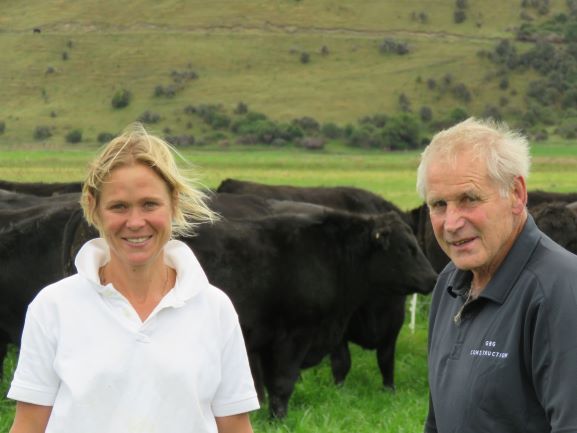Georgie Cameron is a fourth generation Cameron on the iconic 4,000 hectare ‘Wainui Station’, in the hills of the Waitaki Valley near Kurow. Alongside her parents, Walter and Sandy – their passion for breeding robust, powerful beef genetics is obvious both here and at brother Tim’s property ‘Viewfield’ in the nearby Hakataramea Valley where Fossil Creek Angus genetics also play a key role.
This is a harsh environment and one that requires well planned out management and genetics that will survive and perform – year in, year out – no matter what the climate throws at them. “We want live calves on the ground that will grow from day one and finish quickly – it’s a long winter here that starts bloody early and finishes bloody late so they need to put on weight as efficiently as possible”.
Wainui is a 14,000 stock unit operation – and the Cameron’s relish the chance to finish all of their calves on the 450 hectares of irrigated land that lies directly at the foot of the hill country blocks that their cows are run on – with elevation up to 3,500 feet above sea level in a 15 inch rainfall environment. “Our breeding cows are a key part of our operation, not just a tool for pasture control. We breed them well and feed them well” says Walter.
They are mated as yearlings and Georgie is delighted with the 100% in-calf strike rate for the second calvers – “which can be a tricky age group to successfully mate in a harder environment”.
A number of lines of outside cattle are finished in addition to those from their own breeding herd, and like all finishers – the genetic background of animals is clearly demonstrated in growth patterns and attaining premiums, is becoming increasingly important to the Camerons. “We are definitely finishing cattle with Fossil Creek Genetics earlier than the outside stock– with Silver Fern Farms Beef EQ Programme forming a key part of how we look at our genetics. The Cameron family are a great example of how important it is to be balancing the maternal productivity and efficiency of a cow herd and the finishing traits of their progeny. We are now obtaining at least a higher hi
